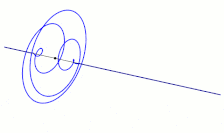Many Worlds Interpretation
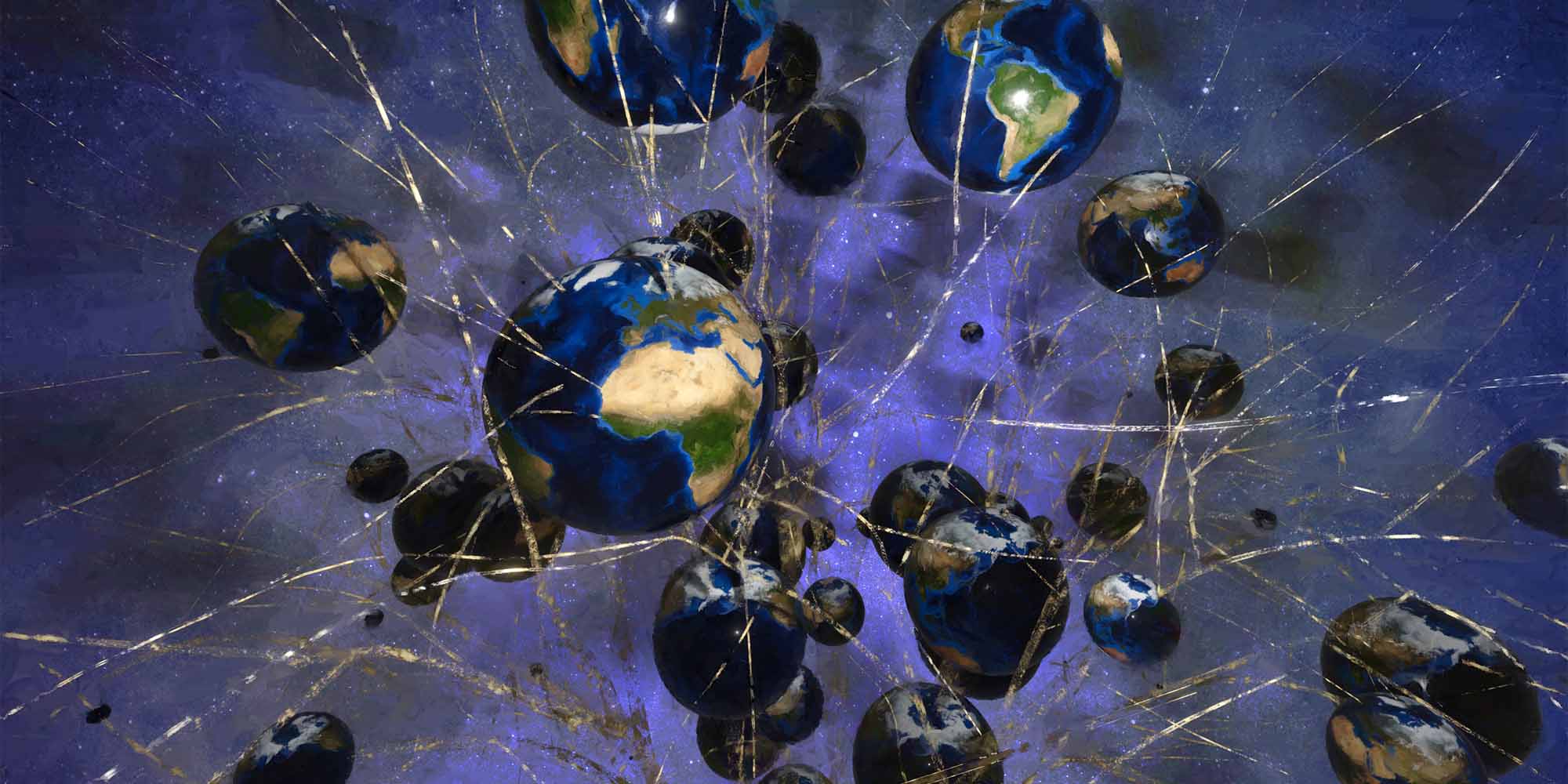
Cover Image by: Віщун, CC BY-SA 4.0 via Wikimedia Commons
Have you ever thought “what if”?
About choices you made, or chances you missed, or dreams you left behind?
What if I told you that all your dreams do come true, and every “what if” finds its answer, in another universe?
This is not a plot of a sci-fi movie – although I know it sounds like one!
This article is about an interpretation of quantum mechanics, backed by some of the brightest minds in physics, suggesting that every possible outcome exists in one of (possibly) infinite number of universes.
Every possible outcome exists?
In accordance with the many-worlds interpretation, yes!
Every time a quantum event has multiple possible outcomes, all possible outcomes are realised in some world or universe.
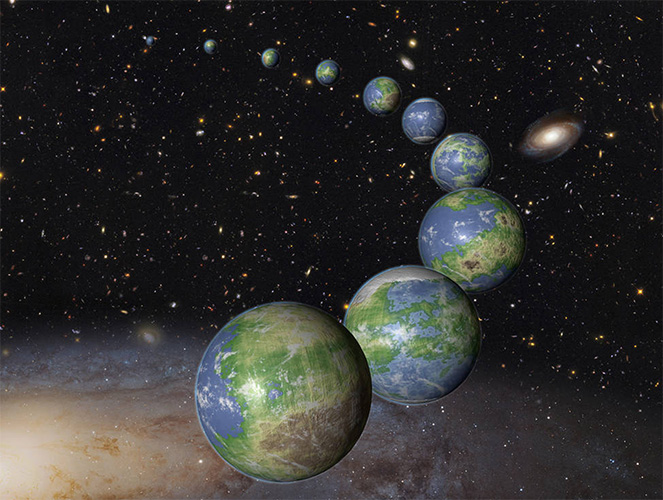 Many Worlds Interpretation – Image by NASA, ESA, and G. Bacon
Many Worlds Interpretation – Image by NASA, ESA, and G. Bacon
A new world is created to manifest each possibility!
Can you imagine that?
Infinite number of worlds?
Well, if new worlds are created for each possible outcome of every quantum event ever, forever… then I guess it makes sense that there are most likely an infinite number of worlds.
“Sense” – in this fascinating (and strange) quantum world!
Why is it called an interpretation?
The MWI is an interpretation of quantum mechanics.
It’s an effort to explain how the quantum world works.
 Planet Earth and observable universe – Image by Wikimedia Commons
Planet Earth and observable universe – Image by Wikimedia Commons
Until this day, scientists have not agreed on one single interpretation that explains all behaviours and interactions of the quantum world.
There are a few interpretations (I mentioned briefly in my previous article), which seem mathematically correct, but all seem to be missing a piece of the puzzle – an important piece.
The piece that unlocks the secrets of the universe(s).
Why was MWI proposed?
As I mentioned in my previous article, a quantum system may be in a superposition of states (e.g., spin up and spin down states).
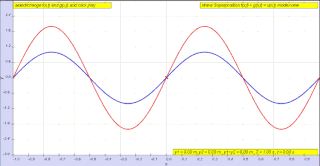 Animation of superposition – Image by Wikimedia Commons
Animation of superposition – Image by Wikimedia Commons
In accordance with the popular Copenhagen interpretation, upon and because of measurement, this superposition of states collapses to one of the possible states (spin up or spin down).
This is called the wave function collapse.
So, the measurement results will show either the one state or the other (e.g., spin up or spin down).
In the cat thought experiment, we saw that by following these quantum rules, we end up with a box that has a radioactive atom that is in both decay and non-decay states. And with a cat that is both, dead and alive, at the same time! Until someone opens the box to check on the cat.
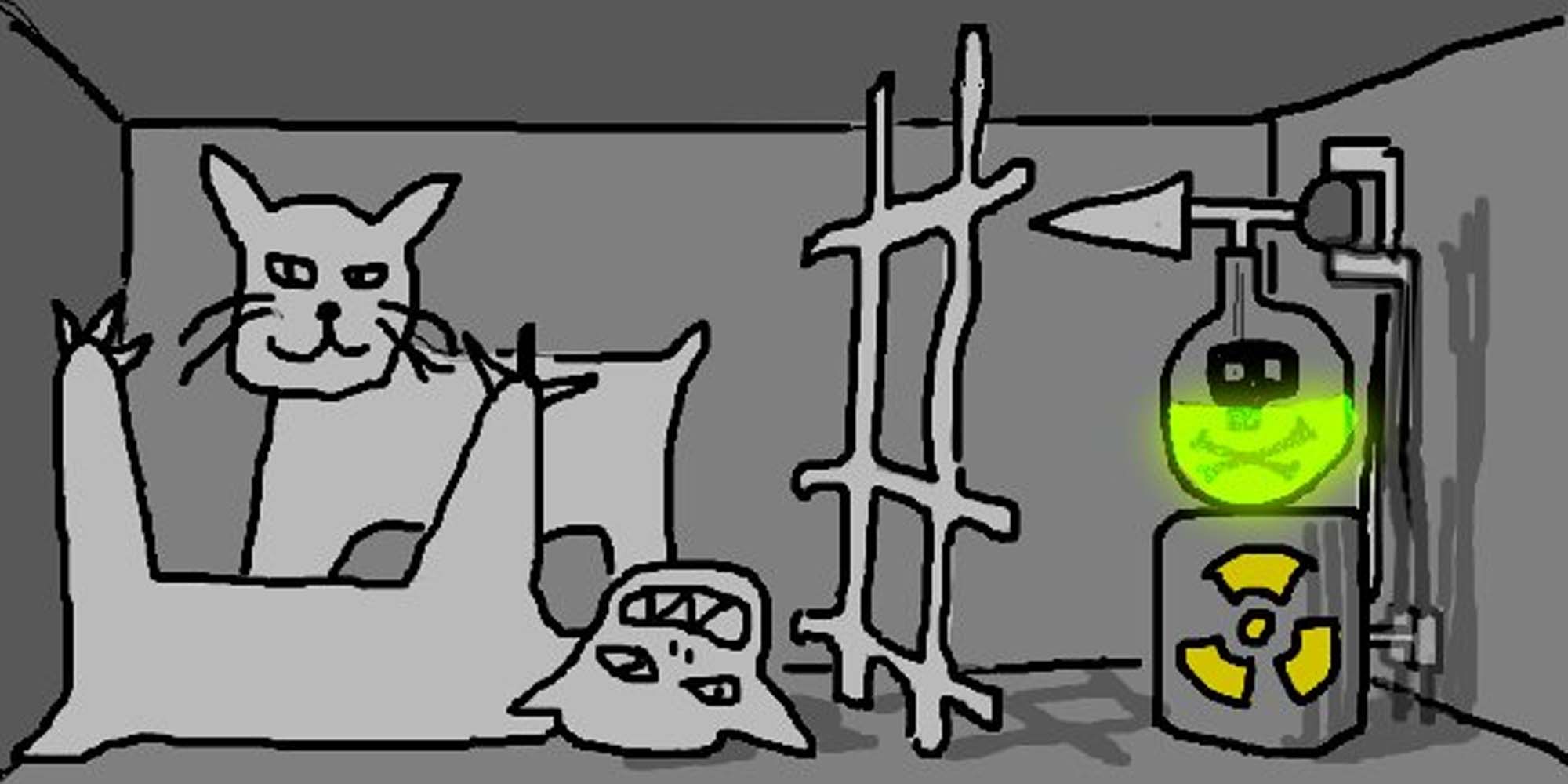 Animation of cat thought experiment – Image by Wikimedia Commons
Animation of cat thought experiment – Image by Wikimedia Commons
Many scientists found it very hard to accept the collapse of the wave function.
Copenhagen interpretation doesn't explain why or how this collapse occurs.
It just says it does.
This unexplained behaviour is referred to as the "measurement problem".
The MWI provides a solution to the "measurement problem".
How does MWI solve the "measurement problem"?
MWI claims that the universal wave function is objectively real and there is no wave function collapse.
So, instead of the wave function collapsing into one of the possible states, every state is real. And every possible outcome is realized.
Considering that the wave function collapse is what creates the measurement problem, and since the MWI removes the collapse, problem solved! It was that simple.
Of course, it’s never that simple.
It’s important first to understand:
What is a wave function?
The wave function (Ψ) is a mathematical function that describes the quantum state of a system.
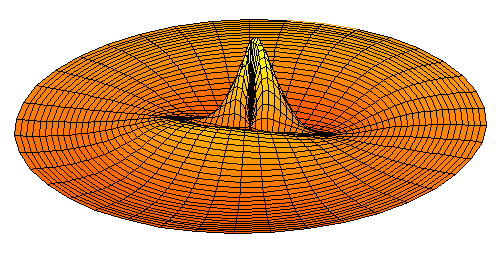 Wave function - Image by Wikimedia Commons
Wave function - Image by Wikimedia Commons
It contains all the information about the system and can be used to calculate the probability of finding the system in a particular state.
The wave function of quantum systems can be thought of as a combination (or superposition) of all possible states.
For a single particle in one dimension, the wave function is denoted by the symbol Ψ (x,t), where: • x is the position, and • t is time.
The evolution of the wave function is described by the Schrodinger equation.
What is the Schrodinger equation?
The Schrodinger equation is the fundamental equation of quantum mechanics. It describes how the wave function evolves over time.
When you solve the Schrodinger equation, you get a wave function that describes the probabilities of finding the system in various states.
However, it doesn't describe a wave function collapse.
Who proposed MWI?
MWI evolved over time through many physicists.
Initially, Erwin Schrodinger published a paper in 1952, explaining his opposition to the idea of the wave function collapse, calling it “patently absurd”.
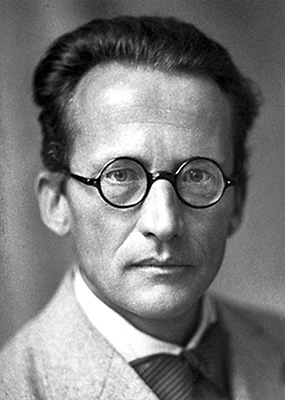 Erwin Schrodinger in 1933 - Image by Wikimedia Commons
Erwin Schrodinger in 1933 - Image by Wikimedia Commons
In his view, the wave function is only controlled by the wave equation (Schrodinger equation). It evolves in accordance with it. And the equation does not describe a collapse of the wave function.
As he wrote:
“To mind it is patently absurd to let the wave function be controlled in two entirely different ways, at times by the wave equation, but occasionally by direct interference of the observer, not controlled by the wave equation.”
During a lecture he gave the same year, he explained that when his equation (Schrodinger equation) seems to be describing several different histories, they are not alternatives, but all really happen simultaneously.
Before this speech, he had “warned” the audience that what he was about to say might “seem lunatic”.
However, his idea was dismissed as too controversial and was forgotten.
Until 1957, when physicist Hugh Everett proposed the Relative state formulation.
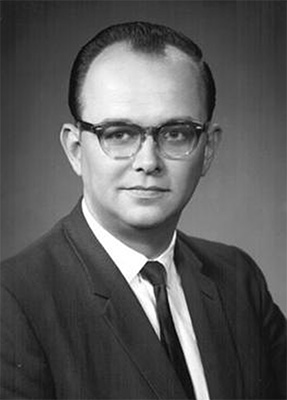 Hugh Everett in 1964 – Image by Wikimedia Commons
Hugh Everett in 1964 – Image by Wikimedia Commons
Everett believed that the deterministic and continuous evolution of the wave function over time, as described by the Schrodinger equation, is the complete description of quantum systems, without any exceptions.
He proposed that the wave function never collapses and that all possibilities of a quantum superposition are objectively real.
In his view, for each quantum event, all possible outcomes occur, and they exist in a superposition relative to each other. When an observer measures a quantum object, the observer-system pair ends up in a superposition of all possible outcomes. All outcomes described by the wave function are equally true.
However, the idea remained largely disregarded during his lifetime.
But, in the 1970s, Bryce DeWitt came across Everett's work and became one of its most vocal proponents.
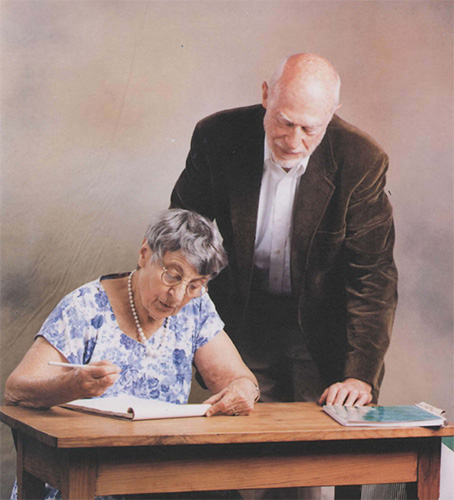 Bryce DeWitt with his wife Cecile DeWitt - Image by Wikimedia Commons
Bryce DeWitt with his wife Cecile DeWitt - Image by Wikimedia Commons
DeWitt recognized the significance of the relative state formulation and believed that it offered a consistent approach to quantum mechanics, by removing the wave function collapse and thus solving the measurement problem.
So, he named it the “many worlds interpretation” and… voila!
The interpretation finally became popular.
I guess a “catchy” name always helps.
Of course, by this time, physicists were more open to alternative interpretations of quantum mechanics. So, timing was also an important factor in the success of this interpretation.
DeWitt, with the assistance of Neill Graham, presented the ideas in a way that was more accessible to other physicists and the broader public.
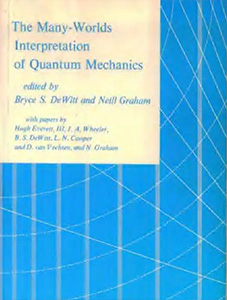 The Many worlds Interpretation of Quantum Mechanics a Fundamental Exposition - 1973
The Many worlds Interpretation of Quantum Mechanics a Fundamental Exposition - 1973
As DeWitt wrote,
"Every quantum transition taking place on every star, in every galaxy, in every remote corner of the universe, is splitting our local world on earth into myriads of copies of itself."
So, the Universe “splits” into different versions of itself.
All versions share the same history up until the point of splitting. Upon splitting, each version then has its own personal memories. One version is unaware of the other and all are equally real.
What does MWI propose today?
• Universal wave function The universal wave function describes the objective reality of the universe.
As Hugh Everett put it: The universal wave function is the wave function or quantum state of the totality of existence, regarded as the "basic physical entity" or "the fundamental entity, obeying at all times a deterministic wave equation."
I think of it as a “superposition of all superpositions”.
• No Collapse Unlike the Copenhagen interpretation which introduces the wave function collapse, MWI remains local and deterministic.
Meaning, the wave function does not collapse. It continues to evolve according to the local and deterministic Schrodinger equation.
• Branch for every possible outcome Every quantum event that has multiple possible outcomes, creates a "branch" for each potential outcome.
Imagine the world “splitting” every time a quantum event has possible outcomes, creating new “branches” or “worlds” where all possibilities are realized.
For every quantum crossroad, there's a world where each path is taken.
• Reality of branches All branches are equally real; none is preferred or more "true" than the others.
• The Observer Observers are treated just like any other quantum system.
They are part of one universal wave function that is always described by the Schrodinger Equation.
Every quantum interaction, whether it involves an observer or not, can lead to the creation of “branches” or “worlds”.
• Non-communicative Once branches "split," they evolve independently and don't communicate or interact with each other.
This explains why we perceive only our own “branch” of reality.
• Perspective From the perspective of an observer in one of these “branches”, it feels as though a specific outcome has occurred.
But, from a "bird's-eye view" of the universal wave function, all outcomes are still present, just in different branches.
• Information preserved All information about a system's state and its evolution is preserved across these “branches”.
MWI example
Let’s use the example of the cat (from the thought experiment).
So, in accordance with the MWI, once someone looks into the box, there is no wave function collapse. The wave function continues to evolve in accordance with the Schrodinger equation.
And once the box is opened, the world “splits” into:
- A world where the cat is dead, and
- A world where the cat is alive.
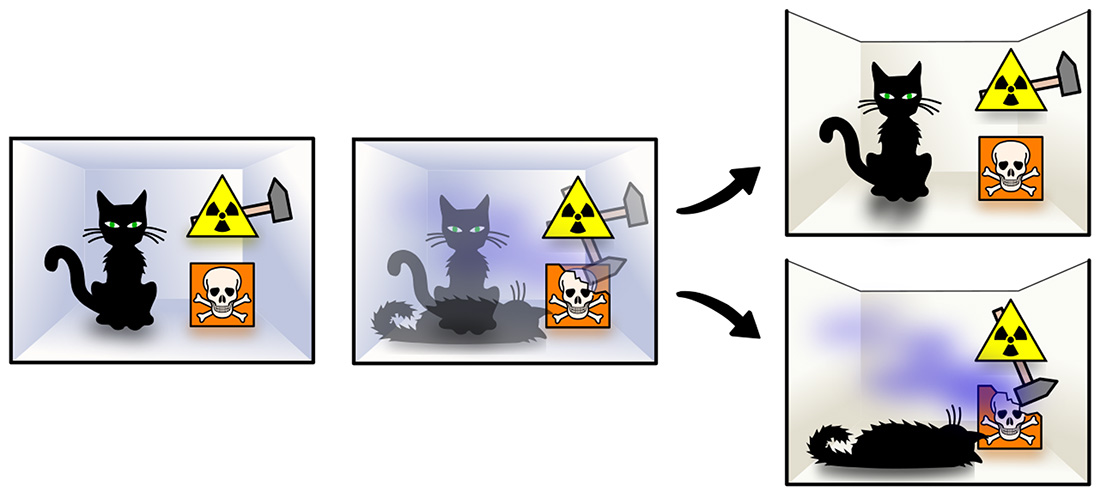 Animation of cat thought experiment with MWI – Image by Wikimedia Commons
Animation of cat thought experiment with MWI – Image by Wikimedia Commons
Both realities exist, but in different “worlds”. And each world is unaware of the other.
So, in accordance with the MWI, there is a world where “you” are reading this article, and another world where “another you” is not!
You are only aware of this world, where you are reading (and hopefully enjoying) this article.
Maybe the “other you” is not even aware that this article exists.
Maybe the “other you” is in a different country, with a completely different life!
You’ll never know. Because “you” and the “other you” live in different parallel universes who are non-communicating.
But, in accordance with MWI, all realities are equally real.
Are there many worlds out there?
Currently, there is no experimental evidence that proves MWI.
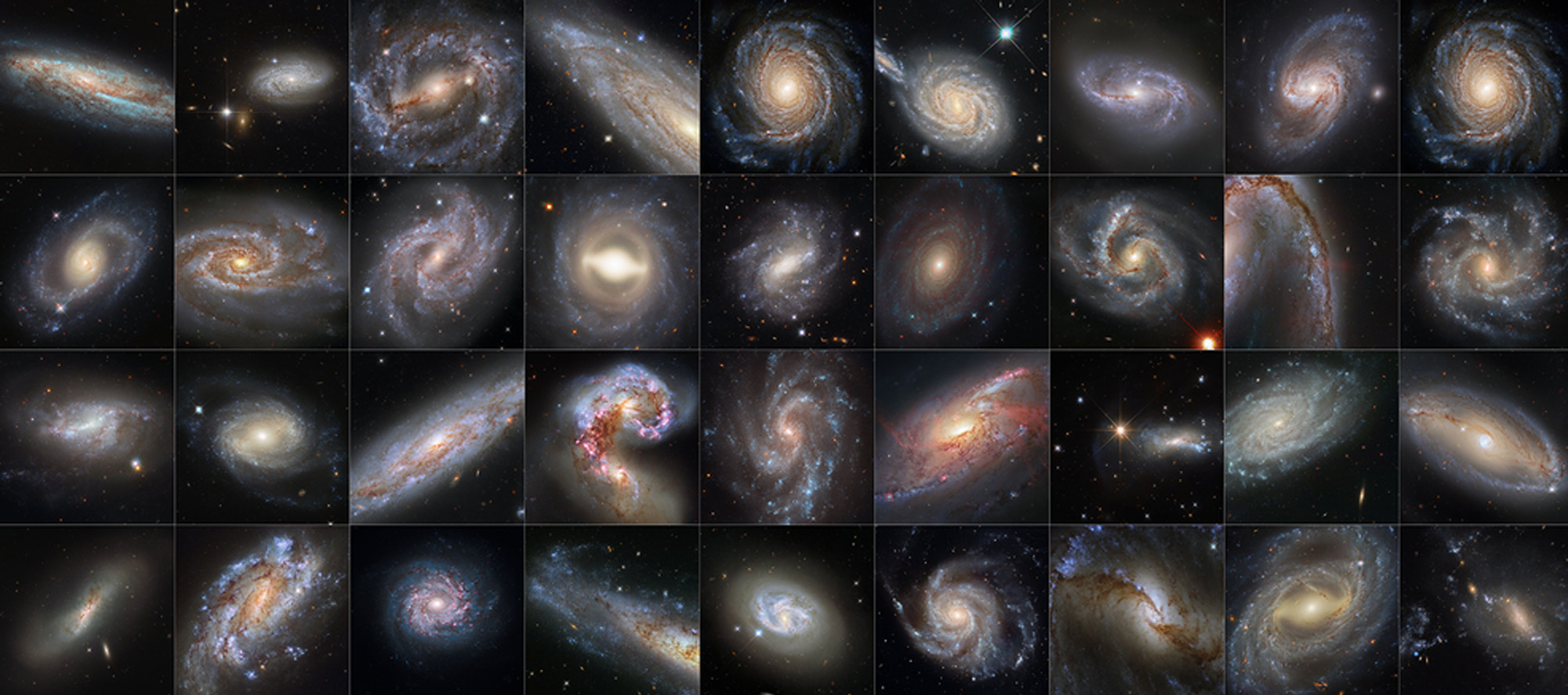 Many Worlds - Image by NASA, ESA
Many Worlds - Image by NASA, ESA
But we can’t deny that it’s a thought provoking, mind opening, beautiful interpretation.
For me, this interpretation means hope.
If a new universe is created for every possible outcome, then everything is possible!
Of course, whether MWI is true or not, what’s important is that we make the most of every minute of this reality we live in. So, appreciate, be kind, forgive, and love – in this world!
